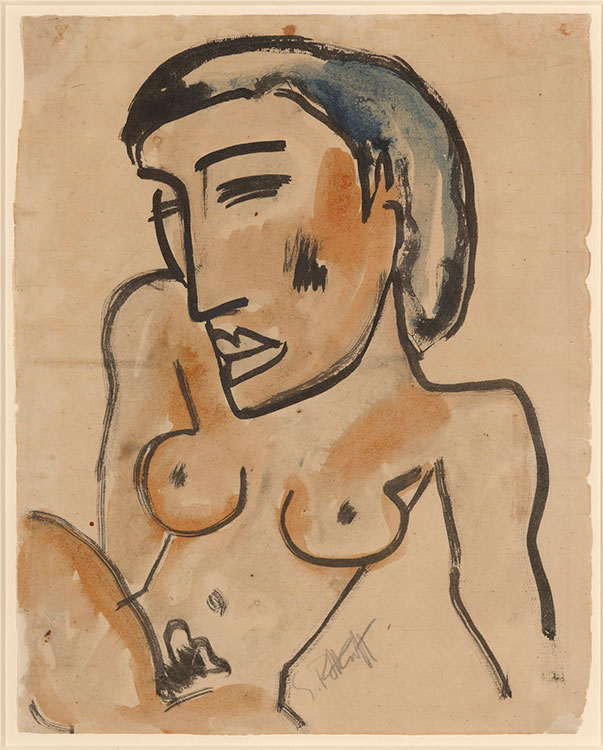
Schmidt-Rotluff was the youngest member of the Brucke group of German expressionist artists. By 1909, he had found his own style, which differed from the general aesthetic of the group in its greater monumentality achieved through extreme simplification of forms. He stated his position as follows: "I don't have any program, only an inexplicable yearning to lay hold of what I see and feel and then find the most direct expression possible for such experience." He was a prolific printmaker, and the woodcutting technique influenced his drawing style, notably in the emphatic, forceful black lines that in his works take on a life of their own. The most striking aspect of this drawing of a woman is the disproportion of her head in relation to her body. He considered the head "the seat of the psyche, of all expression," and spoke of a "transcendental eroticism." He was particularly interested in the volumetric structures and spiritual significance of sculpture from Cameroon, which he encountered in Berlin's ethnographic museum.
Signed at lower center, in pencil, "S. Rottluff".
